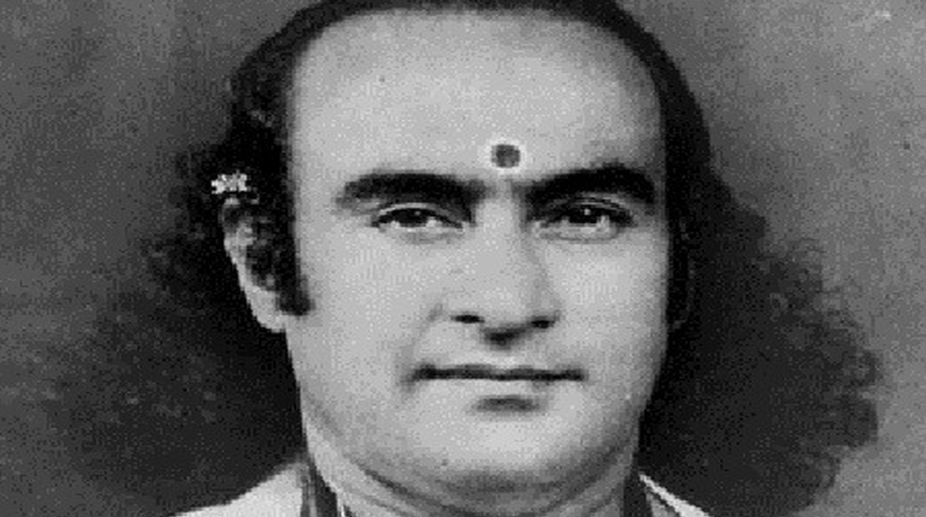Guru Gopinath died in October 1987 while enacting the role of Dasaratha in the famous scene of bidding farewell to his son Rama. It was a fitting end to a great son of India who spent his life for the cause of the performing arts. To mark the 30th year of his passing, I pay tribute to him, who was my Guru and instrumental in shaping my life.
In the words of Rabindranath Tagore, “Mr Gopinath is a real artist and I am sure that there are not many who could rightfully take their place by his side either in India or abroad. He brought to my mind glimpses of the great past when dancing was one of the most treasured arts in India and not as today, a mere device for whetting the jaded appetite of the idle rich. His presence in our midst was a pleasure and now that dancing has again come into vogue amongst us, his style should give us a correct lead for in want of it, we are still groping in the dark.”
Advertisement
Well-versed in the Kapilagandan style of Kathakali, which he imbibed from his family with a two hundred-year-old history in the form, he went to Kerala Kalamanadalam for specialised training. With Esther Luella Sherman, who is known as Ragini Devi, he gave his first performance in Bombay in 1932 of a form he had developed into a contemporary dance style, which was classical in technique and popular in appeal. Their performance took the world by storm and was the first ever exposition of Kathakali outside Kerala.
After that his life was a success story. According to dance historian Ashish Khokar, “He is considered one of the epic personalities of Indian dancing in the 20th century like Uday Shankar”. He extended the boundaries of Kathakali by teaching this male dominated dance form to women too. His choreographic works dealt with subjects apart from stories from Indian mythology — Sree Yeesunaadha, Sister Nibedita, Chandala Bhiksukhi, Kerala Piravi and the Ramlila of New Delhi are a few examples. During the centenary celebrations of Rabindranath Tagore, he choreographed Natir Puja in which this reviewer had taken the lead role. His path breaking form came to be known as Kerala Natanam. Once a palace dancer and principal of the dance institution of the royal family of Travancore, he founded Natana Niketan in Madras, International Kathakali Centre in New Delhi and Viswa Kala Kendra in Thiruvananthapuram.
His illustrious demonstration of navarasa is featured in the major museums of the US, France, Germany and Switzerland. Recipient of numerous accolades and awards, he was given the Sangeet Natak Akademi Award in 1954. The Department of Culture, Government of Kerala started Guru Gopinath Natanagramam in 1994. It is the first dance museum of its kind in India. He was a member of the first cultural delegation of independent India to the USSR in 1954 and was also invited as a judge of classical dances in the Eighth World Youth Festival held at Helsinki, Finland in 1961.
Following the Guru-shishyaparampara his daughter and disciple, Vasanti Gopinath Jayaswal has developed Gopinath Kaavyam — a one-and-ahalf-hour solo format of Kerala Natanam. It has guidelines to differentiate “padams” from “sabdams”. In Kerala Natanam each item would follow the other in such a way that there is a pyramidal effect of building up to a heightened sense of aesthetic pleasure.The music will specify the combinations for each item so that justice is done to the versatility of each instrument. Visuals are to be of modest design. The solo format in Kerala Natanam will provide a minor change to the existing costume that will immediately suggest the aggressive/masculine quality or the tender/feminine quality that may be a striking feature of the particular item and ornamentation to be based on ancient Kerala Murals.
A solo format will follow specificity of presentation and brevity. Vocalists, wind and stringed instruments are to be on one side and percussion on the other, on raised platforms. Dimmed lights rather than the use of curtains are preferred. Purvarangam will use a good panchavadyam to precede Guruvandanam by a live vocalist. The first piece would be Jarjara Nritya accompanied by edakka and talam in triputa/misra chapu or khanda chapu. A dancer holds the Indra dwaja — a staff made of several mutthukodas in a variety of colours. Mudras are to be held only for balancing purposes and movements should be free from purappad, astraabhyaasa orkalaree. The staff is placed into a receptacle in the front corner, which will be there till the end.
At the conclusion the vocalist recites verses from Mantra Pushpam or any such equivalent benediction, while the dancer remains in a namaskara pose. That is to be followed byTaana Laharee, which are pure dance pieces, to the accompaniment of mainly the Veena. Mridangam andtalam are to be the accompaniments in Aadi, champa, rupaka talams with no ragams and theermanams. On the other hand, Kathaa Maalika will comprise excerpts from the puranas with many characters and the artist himself playing the various roles in both tandava andlasya features using rhythmic and raga variations. Vocal (more than one if possible such as a male and a female) is accompanied by selected stringed or wind instruments.
It is better not to play to many instruments at the same time unless a grand conclusion is suggested. Antarangamwill use a vikaaea or abhinaya padam. The item involves the depiction of the various manovrittistages of one particular character alone. One vocalist sings. Music is enhanced but not replaced by instrumentals.
The best tala-bheda is to be displayed in talabhinaya. The song begins with an abhinaya piece with two to four lines of the sahitya with a catchy rhythm and lyric. This is to be intermingled with kalpana svaras or svaraalankara segments. A shlokam in praise of Lord Rama followed by the dhun of Rama Rama Jaya Raja Ram will be the closing Mangalam piece.











